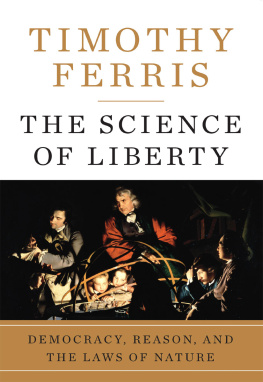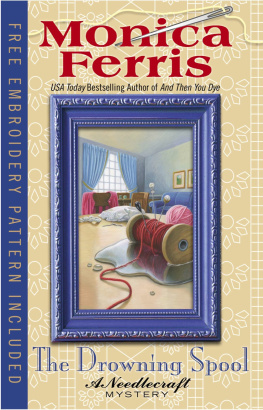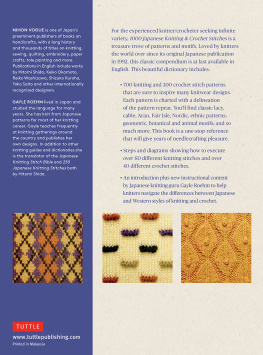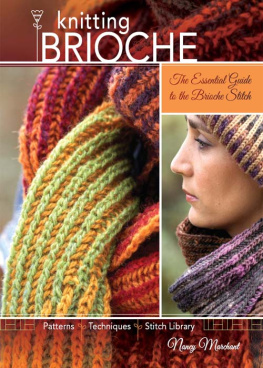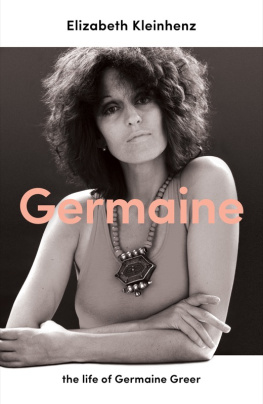Every time I write a mystery, I learn something new. This time Mariah Flor, personal banker at Wells Fargo, told me how to detect a particular kind of bank fraud, who is in charge of detecting it, and what the process is for uncovering its extent. Rosemary Kossel showed Betsy how to do mitered knittingand me, too. Professor Kevin McGowan at Cornell University, ornithologist, told me some things about crows I didnt know. And Ron Plaman of Excel Pawn and Jewelry told me how small an amount one might raise on a really expensive watch.
One
F ALLS brilliant colors had faded; threadbare Halloween was standing tall, waving gnarled fingers from every tree in Excelsior. Betsy Devonshire loved autumn, but business had kept her from a leaf excursion this year. She couldnt even enjoy its brilliant colors in her shop much longer. The needlework patterns of bright-colored leaves, jack-o-lanterns, and witches would make way for the Christmas displays the day after Halloween.
Such was the way of the commerce world. The fall stuff had been picked back around the Fourth of July, the Christmas offerings had been planned before school started. One of the sad parts of owning a retail business was that the owner was always thinking a season or two ahead.
Right now, Betsy was browsing through a catalog from Lantern Moon, which made beautiful baskets. Betsy liked to use their baskets to display needlework products in her shop, and she also carried their baskets for sale, especially the sea-reed rice baskets with their fold-in tops, very handy for carrying projects. Baskets made great Christmas gifts. But Lantern Moon was now also carrying knitting needles made of ebony, rosewood, and coconut palm, and needle cases made of silk, and Betsy was happy to add these items to her order. They would look nice next to a basket full of wool and silk yarns in winter colors of deep green, wine, and gold.
She was totting up the cost with a little sigh when her door sounded its two notes. She looked up to see her good friend and steady customer Jill Cross Larson. Holding on to Jills hand was Jills daughter, Emma, just going on two. Mother and daughter were equally fair, but Jills hair was straight and pulled severely back from her face into a fat braid; her toddlers hair was fine and curly. Emma was walking sideways, reaching for a hat that Jill held in her other hand. Mine, mine! Emma was saying.
Yes, baby, this is your hat, said Jill, handing it over. To Betsy, she added, She was experimenting to see if she could throw it between parked cars into the street.
Throw hat! agreed Emma, suiting action to her words. The hat, a warm knit helmet in bright blue, flew up and forward a couple of yards, landing on a low table covered with framed models of solemn pilgrims and comic turkeys. Emma giggled and tried to pull free of her mothers grasp.
Hold on, Mighty Mite, said Jill, not letting go. She walked her over to the table and picked the hat off a frame. Holding it out of her daughters reach, she said, If I give this to you, do not throw it. Do you understand? Hold it, or wear it, but do not throw it.
Kay, agreed Emma. Of course, on being handed the hat, she immediately threw it. This time it hooked onto a spinner rack of overdyed floss.
Jill looked around at Betsy. Sorry, she said.
Betsy was laughing too hard to reply. Jill was a solemn sort of person. To see her coping with a daughter who had a wild sense of humor was amusing.
Jill again retrieved the hat and this time stuffed it in a pocket, placidly ignoring the outraged toddlers demand for it back.
What can I do for you? asked Betsy, using more effort to ignore Emmas screams.
Two things: First, I want to sign up for that knitting class that Rosemary is teaching.
That took a few minutes, while a check was written and a name entered.
Then, Second, I want to invite you to go horseback riding with me.
Betsy smiled, in case this was the beginning of one of Jills subtle jokes. Ride a horse where?
Oh, out in the fields on my friends farm. She has five horses. Theyre not being ridden as often as they should be, so she says I can come and ride any time I want, and I can bring a friend, too. Seeing that Betsy still did not understand, she continued, You know how every so often we talk about going on a cattle roundup?
It had long been Betsys dreamher maternal great-grandfather had been among the last of the real cowboysto go on a cattle drive. It was a dream Jill shared, though they had not managed to fulfill it even after years of talking about it.
Cattle rides, or roundups, still happened in the twenty-first century, but mostly as tourist attractions. There was a ranch in eastern South Dakota that had one, Betsy knew. But the tourists didnt just stand by the fences, applauding as the cattle streamed by; they got to join in, ride the horses, herd strays back into line, eat beans and wood-grilled steak around a campfire, and sleep on the ground. And they paid good money for such privileges.


